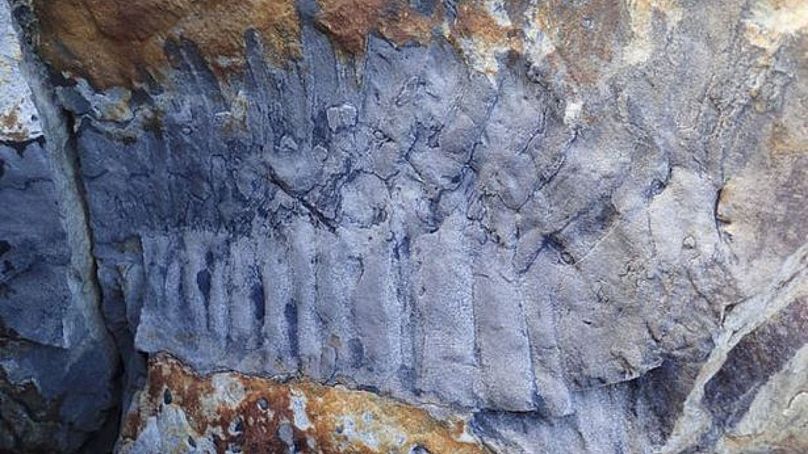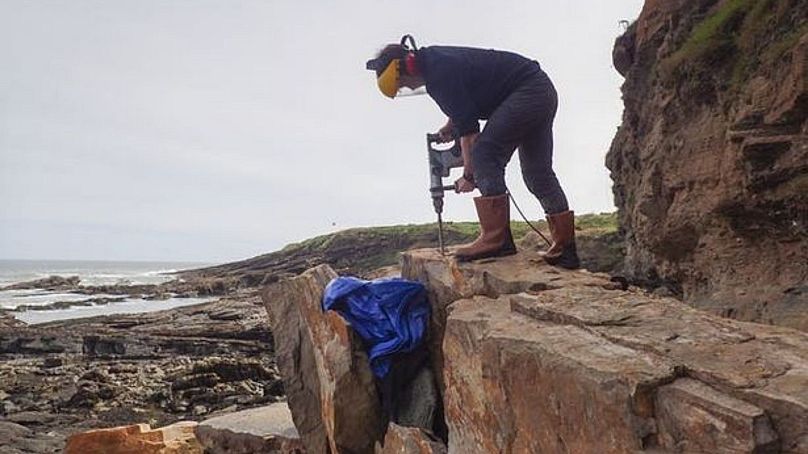The arthropods, known for having two pairs of jointed legs on their body, were found near Newcastle.
Fossils of extra large millipedes have been discovered in the north of England for the first time by scientists.
The arthropods, known for having two pairs of jointed legs on their body, were found on Northumberland beach around 64 km from Newcastle. The study describes the remains “as big as cars”, estimating that they must date back to the Carboniferous Period - 326 million years ago.
The giant fossil, called Arthropleura, is the largest-known invertebrate animal of all time, even bigger than the ancient sea scorpions that previously held the record.
According to scientists at the University of Cambridge, the segment found is about 75 centimetres long. The original creature is supposed to have measured around 2.7 metres long and weighed around 50 kilograms. The results were reported in the Journal of the Geological Society.
"It was a complete fluke of a discovery," says Dr Neil Davies from Cambridge's Department of Earth Sciences and the paper's lead author.
"The way the boulder had fallen, it had cracked open and perfectly exposed the fossil, which one of our former PhD students happened to spot when walking by."
Unlike the cool and wet weather associated with the region today, Northumberland had a more tropical climate in the Carboniferous Period, when Great Britain lay near the Equator. Invertebrates and early amphibians lived off this vegetation around a series of creeks and rivers.
The fossil was extracted in May 2018 with permission from Natural England and the landowners, the Howick Estate.
"It was an incredibly exciting find, but the fossil is so large it took four of us to carry it up the cliff face," said Davies.
It was then brought back to Cambridge so that it could be examined in detail and compared with all previous records - revealing new information about the animal's habitat and evolution.
"Finding these giant millipede fossils is rare, because once they died, their bodies tend to disarticulate, so it's likely that the fossil is a moulted carapace that the animal shed as it grew," says Davies.
"We have not yet found a fossilised head, so it's difficult to know everything about them,” he concludes.
How did the millipedes get to be so large?
The size of Arthropleura has previously been attributed to a peak in atmospheric oxygen during the late Carboniferous and Permian periods. The new fossil comes from rocks deposited before this peak, showing that oxygen levels cannot be the only explanation.
The researchers believe that to get to such a large size, Arthropleura must have had a high-nutrient diet.
"While we can't know for sure what they ate, there were plenty of nutritious nuts and seeds available in the leaf litter at the time, and [there] may even have been predators that fed off other invertebrates and even small vertebrates such as amphibians," adds Davies.
The cause of this species’ extinction is uncertain, but experts say it could be due to global warming which made the climate too dry for them to survive. Another possible explanation is the rise in reptiles, who out-competed them for food and soon dominated the same habitats.
The fossil will go on public display at Cambridge's Sedgwick Museum of Earth Sciences in early 2022.













